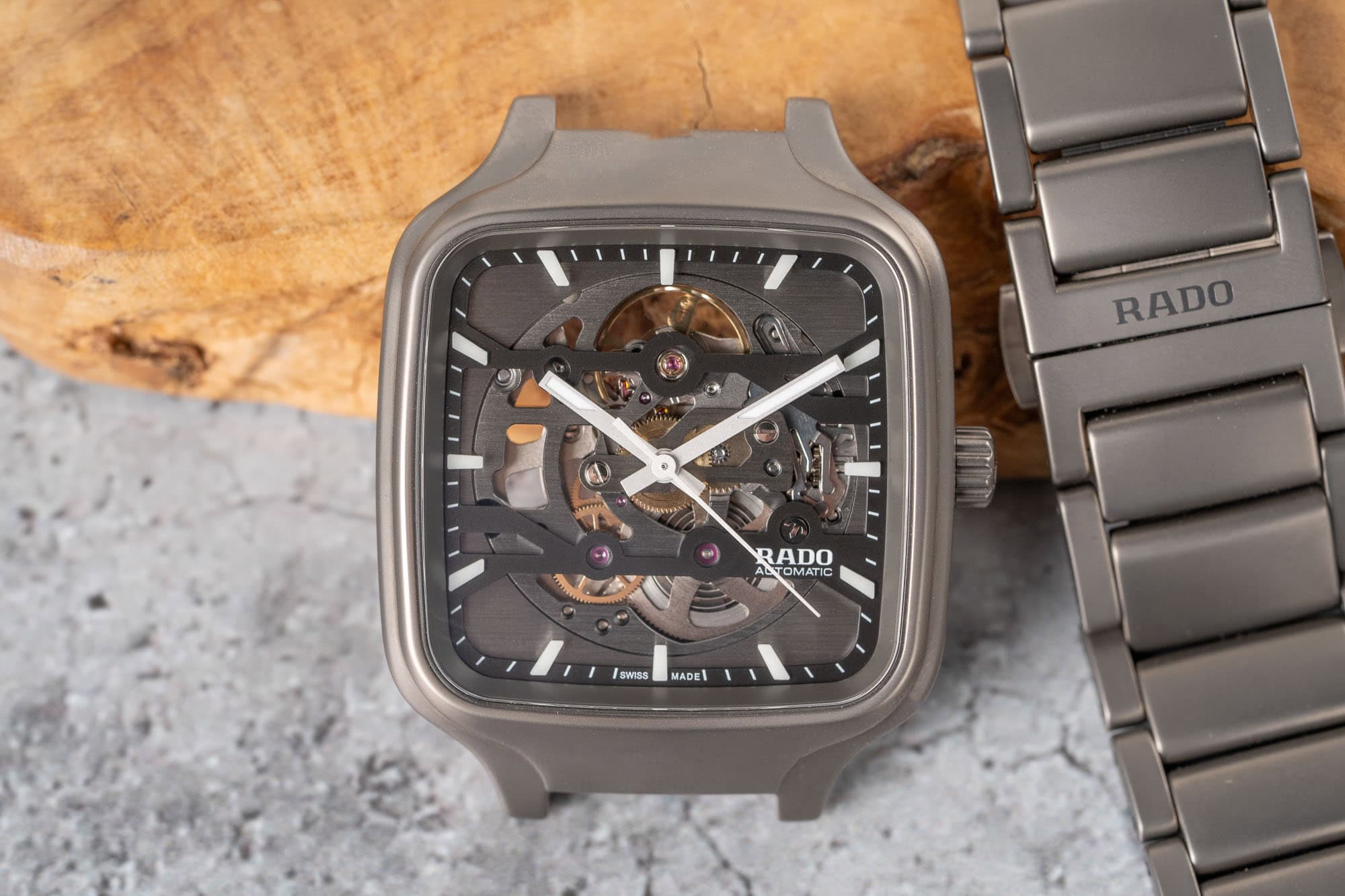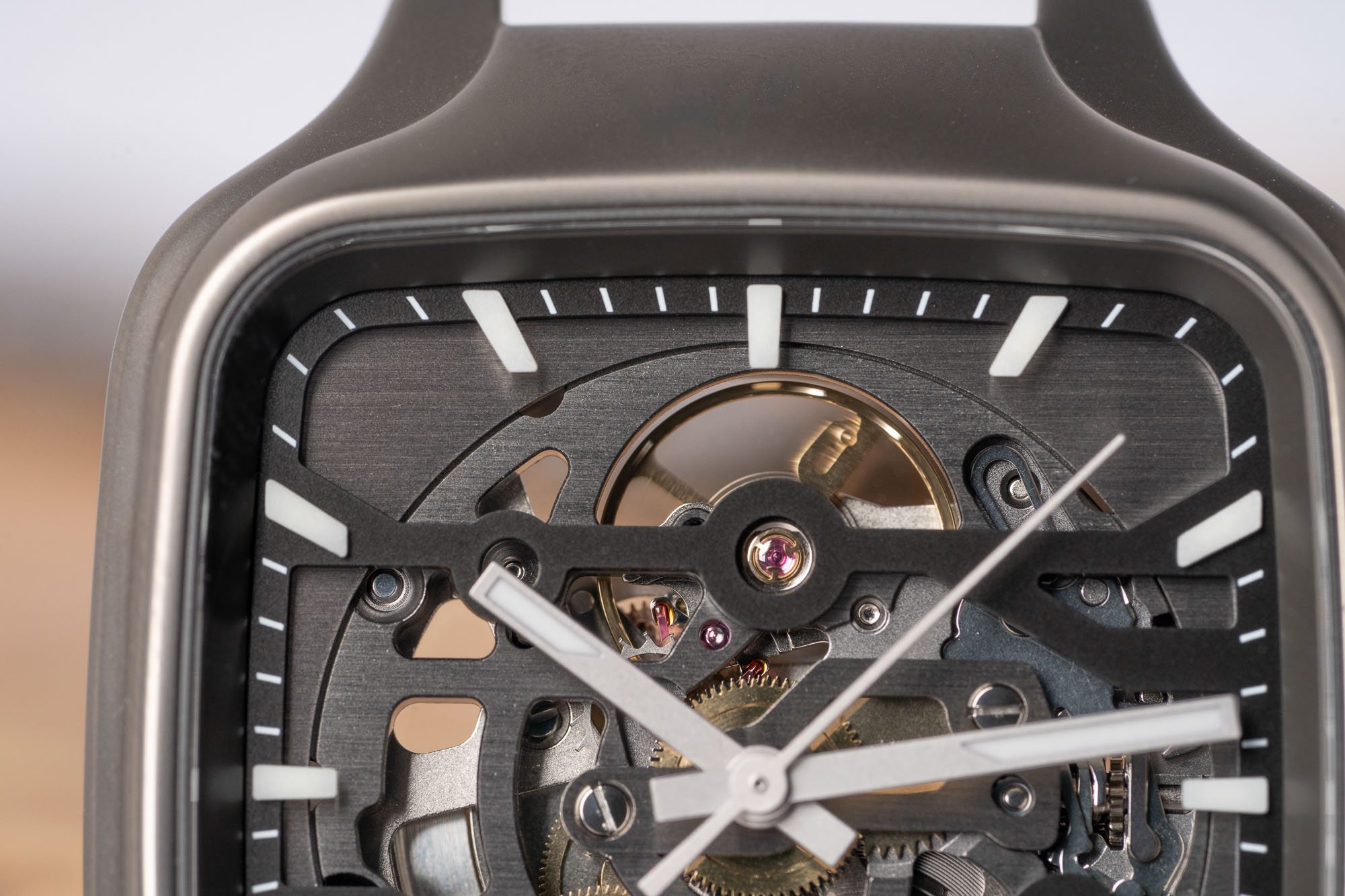I have a feeling that if you asked most watch enthusiasts to tell you their thoughts about Rado, they’d start with the Captain Cook. The brand’s diver has been revived in recent years and become an enthusiast favorite, appearing in both traditional vintage inspired designs as well as more forward thinking and tech oriented variants. I’ve handled my share of Captain Cooks and while I think it’s a perfectly fine dive watch, there’s something a little generic about it and it’s never quite grabbed my interest. It seems positioned as a calling card product for Rado, but I find myself wondering if it’s really the watch that we should most closely identify with the brand.
Because the truth is, when it comes to Rado, they are far more adventurous than the Captain Cook would lead you to believe. And, for that matter, they’re more adventurous than we should have any right to expect given their fairly competitive price points and their place within a big luxury watch group, not typically the home of risk taking when it comes to watchmaking. Beginning with the DiaStar in the 1960s (which featured a case made from an ultra hard alloy that was among the first watches marketed as “unscratchable”) and on into the 1980s when the brand really began hitting their stride with ceramic, Rado has carved out a niche for itself as a brand willing to experiment with both raw materials and the form and function of a watch.
There are many examples of this throughout the brand’s history, including the Anatom which was resurrected a little over a year ago and that I reviewed here. As fond as I am of the Anatom, there’s another Rado collection that I’ve always liked even more, and I happen to think best represents the brand’s inherent weirdness and enthusiasm for challenging watch design norms. The True Square line, to me, is a major sleeper for watch collectors who are interested in something genuinely unique, bumping against the avant-garde, from a brand that also happens to be seated in a prominent place with the watch industry establishment.
The True Square has been a platform for some genuinely bonkers limited editions in recent years that make great use of colored ceramic and play fast and loose with dial conventions. The new True Square Automatic Skeleton is not as off the wall as some of Rado’s most daring pieces, but it’s a great encapsulation, I think, of what Rado does best.
The True Square I had a chance to spend some time with recently is crafted from their “Plasma High-Tech Ceramic” material. Rado uses the “High-Tech” designation to indicate that their ceramic is fired at a higher than normal temperature, which they claim produces a more scratch resistant material with color that will never fade. “Plasma” ceramic in the parlance of the brand refers to a material that has been enriched with carbon, resulting in a flavor of ceramic with a sheen that is more metallic.
I’m not a materials scientist and I think we all have to concede that every brand making ceramic watches makes similar claims about scratch resistance, color durability, and the overall character of the material. So it’s definitely possible that a lot of this is just marketing speak and describes the way most ceramics are made. But I’ve handled a lot of ceramic watches over the years, and have owned a few, and based on my time with this particular True Square I feel completely comfortable saying that this ceramic feels at least as premium, if not moreso, than ceramic watches I’ve owned made by Zenith and Bell & Ross.
I don’t know that I agree that the surface has a metallic sheen, exactly. It’s gray, and has a look that reminds me more of a satin finish you’d find on a Sinn U50, for example, and per Rado this is the first time a matte Plasma finish has been used on a True Square. It challenges the notion, somewhat, that ceramic has to be highly polished when applied to watchmaking. Regardless, it feels great in the hand and I like it quite a bit aesthetically. Unlike a brightly colored or black ceramic, this Plasma ceramic could be mistaken at a glance for a steel or titanium watch, but once you hold it and put it on your wrist, it becomes apparent pretty quickly it’s not either of those metals, and is of course not a metal at all. That’s a good thing, in my view, but some might want their ceramic watches to immediately register as ceramic, which is also a perfectly fine approach.
There’s an old axion in watch circles that square cases of a smaller size tend to wear larger than their dimensions would indicate if you’re used to circular watches. This True Square measures 38mm across but still wears, in my opinion, like a circular 38mm watch, or maybe a hair bigger. I credit that to the rounded corners, which soften up the case quite a bit. The lugs pinch tightly at 12 and 6, and there’s a thin “step” design that extends around the entirety of the case giving the True Square just a bit of a sculptural quality, which is a nice thing to have in a watch that is just 9.7mm tall.
The thing about wearing a square watch, at least for me, is that you’re never not aware that you’re wearing a square watch. Maybe if you always wear a Tank or something it just becomes second nature, but as a circular watch guy through and through, I think it would just take me longer to get used to having a completely new shape on my wrist. That’s not to say I disliked the experience – I think this watch is very nicely made and a lot of fun – but it always stayed at the forefront of my mind. There was something almost self conscious about it. We talk about watches “disappearing” on the wrist all the time in terms of their comfort, but less so in terms of how much you’re actually consciously aware at all times that you’re wearing this specific watch. Clearly this has a lot more to do with me and my own watch wearing habits and internalized notions about how our watches should present to us and the rest of the world than the Rado True Square itself, but it was nevertheless a feeling that I couldn’t ignore.
Rado’s R808 movement powers the True Square. It’s derived from a stock ETA caliber that carries 80 hours of power reserve. It’s been pretty fully customized for Rado and is visible through a skeletonized dial with prominent black coated bridges running from 10 to 2 and 8 to 4. My favorite little detail on the movement is the horizontal brushing on the plate below those bridges. It looks great, and fits the sort of industrial, futuristic vibe of the watch that the skeletonization and color are leaning into.
The Rado wordmark is present on the bridge surface closest to the 4:00 hour marker. All of the markers are applied and cantilevered over the surface of the multilevel dial, making time telling relatively easy in spite of the often repeated notion that skeletonized dials suffer in terms of legibility. I’ve never really found this to be true. As long as the hands and markers have some contrasting element it’s quite easy to pick them out from the mechanical maze below. Rado has lumed all of the markers and the hour and minute hands, so they present as bright white in the day and glow (somewhat dimly) when activated in the dark. A skeleton design like this might not be as easily readable to the minute as a Submariner or a Big Pilot, but you’d have to be actively trying not to see the dial to reasonably say that the True Square is illegible.
The bracelet is crafted from the same Plasma ceramic as the case and is a three link, non-tapering design. It closes with a butterfly clasp and I found it to be very comfortable and it’s a good aesthetic match for the case. It’s worth pointing out how few ceramic watches ship with full ceramic bracelets – the fact that Rado is able to offer the watch in this configuration for $3,000 strikes me as being a pretty major value. If you prefer black, they also have a variant available on a rubber strap that comes in at $500 less.
The True Square will obviously not be for every taste, and Rado, I’m sure, can count on selling far more Captain Cooks this year than Plasma True Squares. But that’s just another reason I’m so fond of this watch. It’s harder and harder as years go by to find oddballs and niche pieces like this in the collections of big, mass market brands, and the True Square serves as a reminder that the less explored corners of these collections are still worthy of our time, and in fact where the most interesting watches are being made, more often than not. Rado








